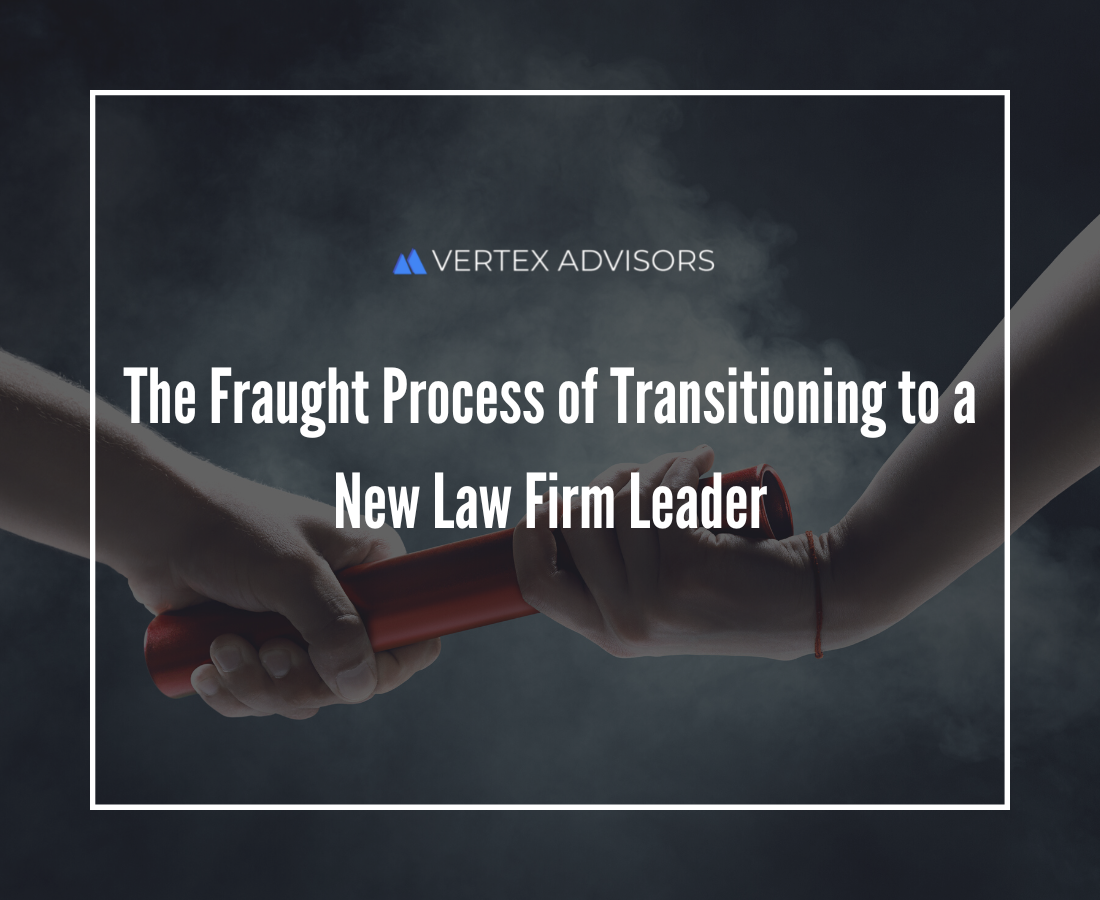Recently the nation was transfixed by President Joe Biden’s debate performance and subsequent insistence he would continue his reelection campaign. Politics aside, a great majority believed it was time for him to pass the torch and step aside, which he ultimately did. Similarly, one of the thorniest and often saddest issues that law firms encounter is what to do about partners who stay beyond the point when they should. It’s a fraught issue for a host of reasons – financial, emotional, interpersonal, and professional. Moreover, when the partner in question is a firm leader or founder the complex challenge is magnified.
As highly autonomous professionals, lawyers too often assume they will independently control when they step back or step down. They fail to recognize that taking the initiative gives them far more control over their destiny than staying too long. It is far better for them to plan ahead and identify their own personal and professional indicators for when “it’s time” to start their next chapter. This includes thoughtful consideration given to what they’ll do should unplanned circumstances occur such as a sudden disability or other unforeseen life changes.
Motivations for partners can be complex, hard to fully identify, and challenging to address.
- Economic incentives may include: (i) features of a firm’s deferred compensation plan – or lack thereof -- that discourages retirement and (ii) a compensation system that encourages hoarding of origination credit and client relationships and does not encourage delegation or gradual wind-down.
- Professional incentives may include: (i) a murky practice succession process; (ii) the lack of a practice successor (in part because of the aforementioned economic incentives over time); or (iii) fears over loss of professional recognition or connections with colleagues (often developed over multiple decades).
- Personal motivations may include: (i) lack of outside interests, connections, or passions; (ii) difficulties at home; (iii) lack of adequate finances to cover retirement or other personal obligations; or (iv) professional and personal identities that are so intertwined that the lawyer cannot envision a life without the label of practicing lawyer.
Law firms are ill-equipped to solve personal motivations but coaching or referrals to outside resources can help lawyers plan for health care, disability, and long-term care insurance policies; wealth and tax liability management; and the pursuit of other interests they may not have considered. In fact, such resources should be advised early in a one’s career upon reaching partnership status or joining laterally – it is something in our experience that great firms routinely do.
Conversely, economic and professional incentives are within a firm’s reach to address and manage. Nettlesome challenges like deferred compensation and compensation system features that reinforce hoarding work and client relationships past the point of practicality need to be tackled as part of a firm’s strategic roadmap. Here too in our experience great firms that encourage sharing and collaboration out-perform and have greater partner satisfaction.
Relative to building a firm’s culture and future, the processes for succession and retirement (not the same thing) need to be clear and applied equally. This isn’t necessarily a retirement age mandate, but it is an established and visible process by which every lawyer who reaches a given age is consulted in light of their performance statistics, work delegation, and career plans regardless of whether they are thriving our underperforming. Ideally, this process begins earlier rather than later at the same age for everyone and is revisited every two to five years with ongoing communication and monitoring. The more partners across the firm are aware of this routine process the better, so it is expected and not perceived as confrontational.
It is in the firm’s and the partners’ best interests to deal with succession and retirement planning proactively as business matters. A smooth transition to the next chapter or as Charles Barkley has described it, “the back nine,” isn’t easy, but whether one is on the 10th or the 17th hole, it is far better for the lawyer to do it and the law firm to facilitate it with purposeful advance intention and grace.
Navigating highly charged issues linked to professional transitions can often benefit from an outside resource, providing insights as to what works born of experience and recommendations that feel less personal or targeting to the lawyers. Vertex Advisors frequently works with firms tackling succession planning as well as barriers to timely partner retirement within the context of overall strategic business planning to further a firm’s greatness. We are here to help you tackle even the most sensitive professional territory. Call on Vertex!

















